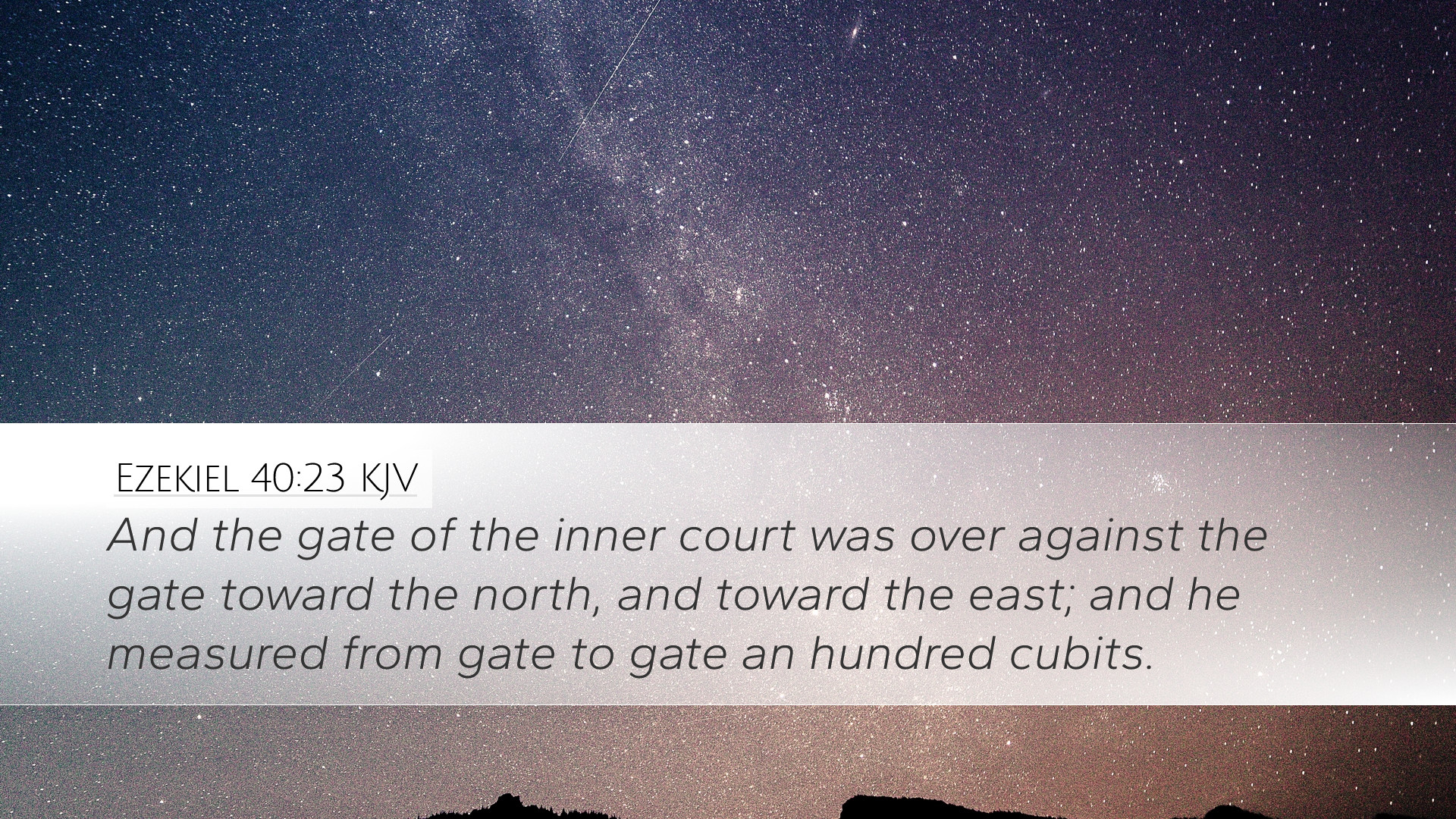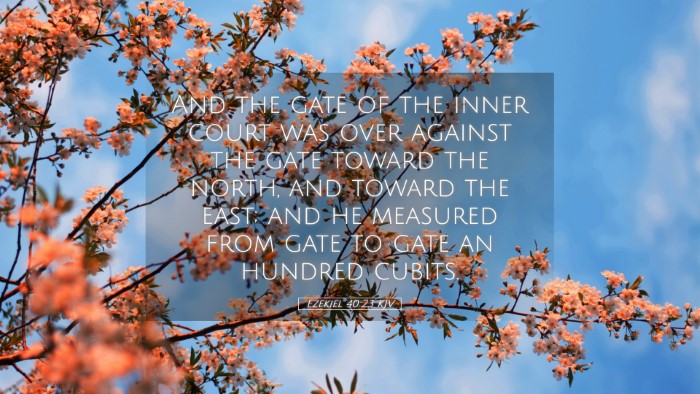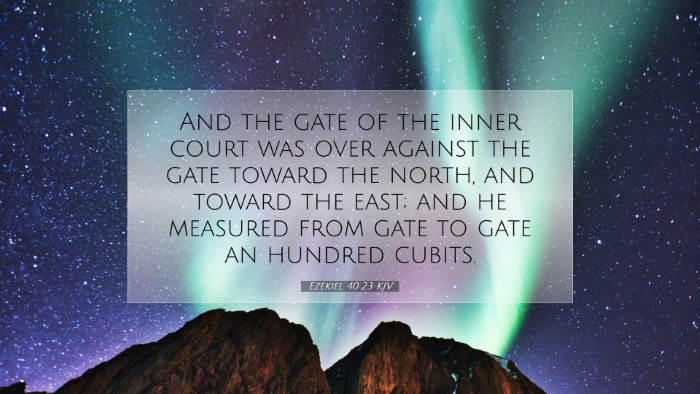Ezekiel 40:23 Commentary
Verse Reference: Ezekiel 40:23 - "And the gate of the inner court was toward the north: and the gate of the outer court was toward the north: and the gate that looked eastward was the one that looked toward the east." (KJV)
Introduction
The tenth chapter of Ezekiel remarkable unfolds the vision of a restored temple. Ezekiel's prophetic insight teaches about the order and sanctity expected in the Divine arrangement of worship and ceremony. This specific verse, Ezekiel 40:23, describes the orientation of the gates of the inner and outer courts. Such precise delineations offer not just architectural details but rich theological implications.
Context of the Passage
The larger context of Ezekiel's vision comes during a time of exile, when the Israelites are longing for restoration and a return to their homeland. Ezekiel's detailed descriptions of the temple emphasize God's desire to be present among His people. This passage is crucial as it reflects upon the spatial arrangements that signify God’s holiness and the accessibility of worship.
The Gates: Symbolism and Significance
1. The Nature of the Gates
In Ezekiel's vision, gates are more than mere architectural features; they symbolize access to God. The functional aspect, providing entry and exit, parallels the spiritual access God's people have. As Matthew Henry notes, "The gates serve as a point of transition from the outside world to the holy sanctuary." This transition reflects the believer's movement from the secular to the sacred.
2. Directionality of the Gates
The directional positioning of the gates is deliberately noted. The northward orientation, particularly represented in this verse, symbolizes the strength and fortitude of God. Albert Barnes elaborates that the northern gate's implication signifies that God's presence is approachable even from areas deemed least favorable.
Gates as a Reflection of God’s Presence
The repetitive mention of the gates facing north prompts consideration of God's divine order. Adam Clarke emphasizes that the configuration of the gates serves a dual purpose: to establish God’s radiant holiness while inviting the people to assemble orderly and reverently. The structured approach culminates to present God as a God of order and purpose.
Theological Implications
1. Access to God and Community
The inner and outer courts hint at the distinction of areas within the temple that signify levels of holiness. This separation reaffirms God’s holiness whilst maintaining an open invitation to worshippers, thus reflecting the biblical premise that God desires close fellowship with His people. Henry suggests that such divisions also symbolize the community aspect of worship, where individuals gather to honor God.
2. Anticipation of the New Covenant
Amidst the Old Testament sentiments regarding sacred spaces, there lies a prophetic undercurrent pointing toward a new order under the New Covenant. The gates' descriptions in Ezekiel may foreshadow the fuller access offered through Jesus Christ, where believers are not confined to specific spaces but gain access to God directly. In this way, Barnes posits that the vision serves as a precursor to the inclusivity found in the Gospel.
Conclusion: Reflective Insights
As one considers Ezekiel 40:23, it is vital to appreciate both its historical context and its enduring relevance. This verse captures the hope of a people yearning for God’s presence, highlighting the necessity for sanctity in worship. For pastors and theologians, these themes continue to resonate with contemporary worship settings where believers are called to approach God with reverence. In summation, understanding the gates in Ezekiel's vision aids in grasping the dynamics of access, community, and holiness central to worshipping the Almighty.
Further Reflections
- Worship and Access: How can modern church practices echo the significance of Ezekiel’s gates as access points to divine worship?
- Community Dynamics: What mechanisms can contemporary congregations implement to foster a shared sense of holiness and reverence among worshippers?
- Covenant Understanding: How does the realization of the New Covenant alter our interpretation of Old Testament worship practices?


